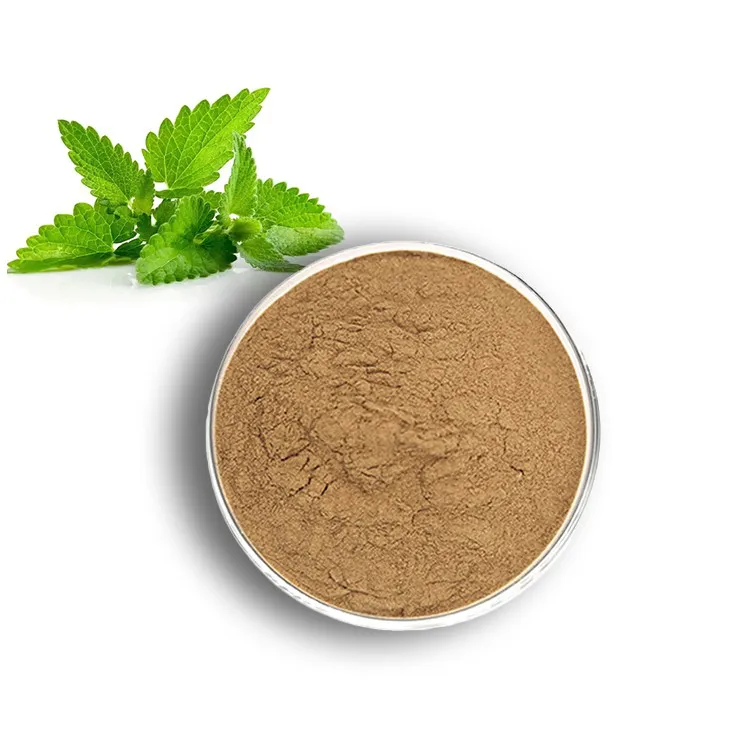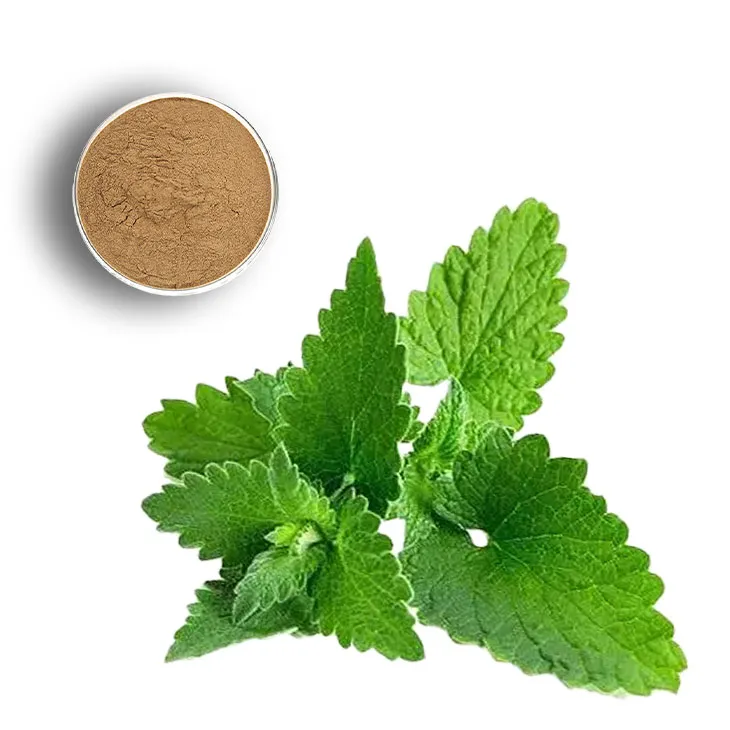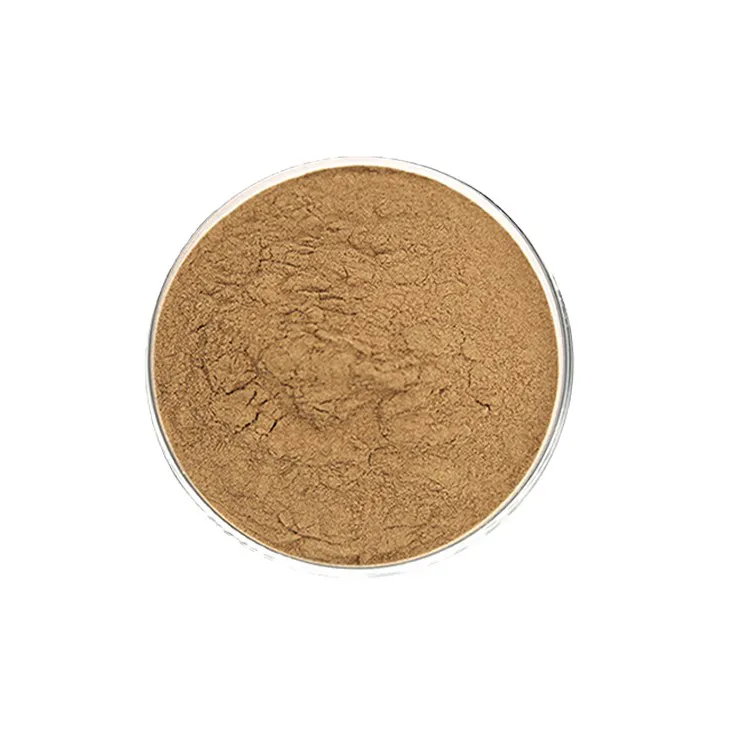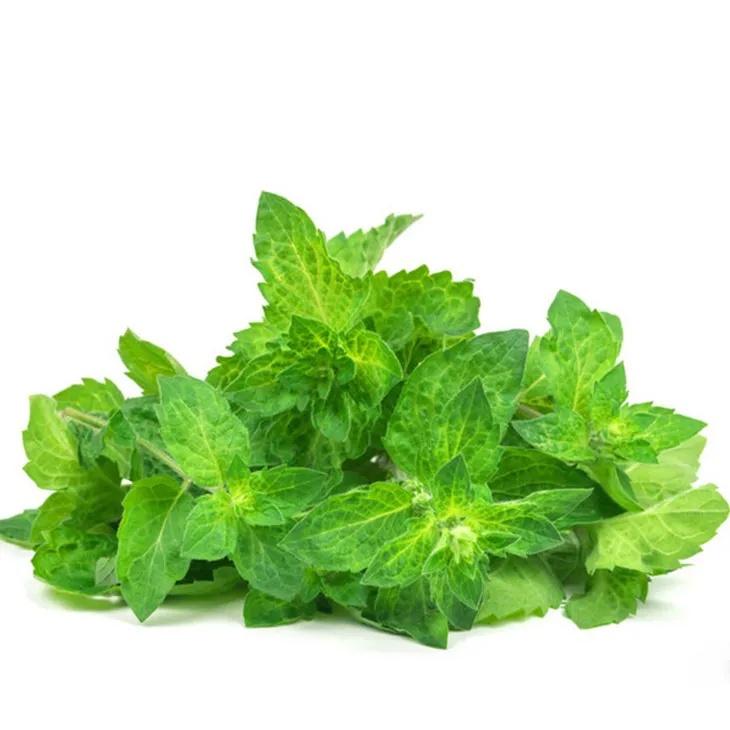- 0086-571-85302990
- sales@greenskybio.com
The process of extracting rosmarinic acid from lemon balm extract.
2024-11-30

1. Introduction
Rosmarinic acid is a compound with numerous beneficial properties, and its extraction from Lemon Balm Extract has become an important area of research. Lemon balm, also known as Melissa officinalis, is a herbaceous plant that has been used for centuries in traditional medicine and in the food and cosmetic industries. The extraction of rosmarinic acid from Lemon Balm Extract is a multi - step process that requires careful attention to detail at each stage.

2. Selection of Lemon Balm Material
2.1 Quality Considerations
The first step in the extraction process is the selection of appropriate lemon balm material. High - quality lemon balm is essential for a successful extraction. Factors such as the plant's origin, growth conditions, and harvesting time can all affect the quality of the lemon balm and, consequently, the amount of rosmarinic acid it contains. For example, lemon balm that is grown in a clean, unpolluted environment and harvested at the optimal time is likely to have a higher concentration of rosmarinic acid.
2.2 Freshness and StorageFreshness is also a crucial factor. Lemon balm should be processed as soon as possible after harvesting to prevent the degradation of rosmarinic acid. If the plant material needs to be stored, it should be done under appropriate conditions, such as in a cool, dry place or through proper freezing methods. Improper storage can lead to a decrease in the amount of rosmarinic acid available for extraction.

3. Extraction Technologies
3.1 Microwave - Assisted Extraction
Microwave - assisted extraction (MAE) is one of the emerging techniques in the extraction of rosmarinic acid from Lemon Balm Extract. In MAE, microwave energy is used to heat the lemon balm extract, which in turn enhances the mass transfer of rosmarinic acid. The microwaves cause the molecules in the extract to vibrate, creating microscopic channels that allow the rosmarinic acid to be more easily released from the plant material. This process can significantly accelerate the extraction process compared to traditional extraction methods.
During MAE, the parameters such as microwave power, extraction time, and solvent - to - sample ratio need to be carefully optimized. For example, a higher microwave power may lead to a faster extraction, but it can also cause the degradation of rosmarinic acid if not properly controlled. Similarly, the extraction time should be long enough to ensure sufficient extraction but not so long that it results in the formation of unwanted by - products.
3.2 Other Extraction MethodsAside from MAE, there are other extraction methods that can be used to extract rosmarinic acid from lemon balm extract. One such method is Soxhlet extraction, which is a traditional and widely used extraction technique. In Soxhlet extraction, the lemon balm sample is continuously refluxed with a solvent, usually ethanol or methanol, over a period of time. This method is relatively time - consuming but can provide a high extraction yield if carried out properly.
Another method is supercritical fluid extraction (SFE). SFE uses supercritical fluids, such as carbon dioxide, as the extraction solvent. Supercritical fluids have unique properties that make them highly suitable for extraction, such as high diffusivity and low viscosity. However, SFE requires specialized equipment and is relatively more expensive compared to other extraction methods.

4. Refinement of the Extracted Mixture
4.1 Crystallization
After the extraction process, the obtained mixture contains not only rosmarinic acid but also other impurities. Crystallization is a common method used to purify rosmarinic acid. The principle behind crystallization is based on the differences in solubility of rosmarinic acid and its impurities in a particular solvent. By carefully adjusting the temperature, concentration, and other factors, rosmarinic acid can be made to crystallize out of the solution while the impurities remain in the solution.
For example, if ethanol is used as the solvent, by slowly cooling the solution, rosmarinic acid may start to form crystals. The crystals can then be separated from the mother liquor through filtration or centrifugation. However, the crystallization process needs to be carefully controlled to ensure the purity and quality of the resulting rosmarinic acid crystals.
4.2 FiltrationFiltration is an essential step in the purification process. It is used to separate the solid rosmarinic acid crystals from the liquid phase. There are different types of filtration methods that can be used, such as vacuum filtration, pressure filtration, and membrane filtration. Vacuum filtration is often used in the laboratory scale, where a Büchner funnel and a vacuum pump are used to draw the liquid through a filter paper, leaving the crystals on the filter paper.
Pressure filtration can be used for larger - scale operations, where a positive pressure is applied to force the liquid through the filter medium. Membrane filtration, on the other hand, can be used to separate particles based on their size. In the purification of rosmarinic acid, filtration helps to remove any remaining impurities, such as un - crystallized substances and small particles, from the final product.

5. Quality Control
5.1 Analytical Methods
Throughout the extraction and purification process, strict quality control is required to ensure that the final product meets the requirements for various applications. Analytical methods such as high - performance liquid chromatography (HPLC) are commonly used to determine the purity and concentration of rosmarinic acid. HPLC can separate and quantify rosmarinic acid in the sample based on its interaction with a stationary phase and a mobile phase.
Other analytical techniques, such as ultraviolet - visible spectroscopy (UV - Vis) and mass spectrometry (MS), can also be used to provide additional information about the rosmarinic acid, such as its structural characteristics and the presence of any impurities. These analytical methods help to monitor the progress of the extraction and purification processes and ensure that the final product is of high quality.
5.2 Standards and SpecificationsIn addition to analytical methods, there are also standards and specifications that need to be met for rosmarinic acid products. For example, in the pharmaceutical industry, rosmarinic acid products must meet certain purity requirements and safety standards. These standards are set to ensure the efficacy and safety of the products when used in medications or other pharmaceutical applications.
In the cosmetic industry, rosmarinic acid is often used for its antioxidant and anti - inflammatory properties. The products containing rosmarinic acid must also meet the relevant cosmetic industry standards, such as stability and compatibility with other ingredients. Meeting these standards and specifications is crucial for the successful commercialization of rosmarinic acid - derived products.
6. Applications of Rosmarinic Acid
6.1 Pharmaceutical Applications
Rosmarinic acid has shown potential in various pharmaceutical applications. It has antioxidant, anti - inflammatory, and antimicrobial properties. In the treatment of inflammatory diseases, such as arthritis and dermatitis, rosmarinic acid may help to reduce inflammation and relieve symptoms. Its antioxidant properties can also protect cells from oxidative damage, which is associated with many chronic diseases.
Furthermore, rosmarinic acid has been studied for its potential in antiviral applications. Some research has shown that it may have inhibitory effects on certain viruses, although more studies are needed to fully understand its antiviral mechanisms and potential clinical applications.
6.2 Cosmetic ApplicationsIn the cosmetic industry, rosmarinic acid is a popular ingredient in skincare products. Its antioxidant and anti - inflammatory properties make it suitable for use in anti - aging products, where it can help to reduce wrinkles and improve skin elasticity. It can also be used in products for treating skin conditions such as acne and rosacea, due to its anti - inflammatory effects.
Rosmarinic acid can be incorporated into various cosmetic formulations, such as creams, lotions, and serums. However, its stability and compatibility with other ingredients need to be carefully considered during product development to ensure the effectiveness and safety of the final product.
7. Conclusion
The process of extracting rosmarinic acid from lemon balm extract is a complex but important process. From the selection of high - quality lemon balm material to the use of advanced extraction technologies, and through the refinement and quality control steps, the goal is to obtain pure rosmarinic acid that can be used in various industries. The potential applications of rosmarinic acid in the pharmaceutical and cosmetic industries, among others, make this extraction process a topic of great interest and ongoing research. As technology continues to advance, it is expected that more efficient and sustainable extraction methods will be developed, further expanding the potential uses of rosmarinic acid.
FAQ:
What is the importance of high - quality lemon balm in the extraction of rosmarinic acid?
High - quality lemon balm is important because it provides a better starting point for the extraction of rosmarinic acid. It likely contains a more consistent and potentially higher amount of rosmarinic acid, which can lead to a more efficient and successful extraction process.
How does microwave - assisted extraction work in the extraction of rosmarinic acid from lemon balm extract?
Microwave - assisted extraction works by using microwave energy. This energy enhances the mass transfer of rosmarinic acid from the lemon balm extract. It causes the molecules in the extract to move more vigorously, which helps to break the bonds holding the rosmarinic acid in the plant material and allows it to be more easily transferred into the extraction solvent, thus accelerating the extraction process.
What are the main steps in purifying the rosmarinic acid after extraction?
The main steps in purifying the rosmarinic acid after extraction often involve crystallization and filtration. Crystallization helps to separate the rosmarinic acid from the other components in the mixture by forming pure crystals. Filtration is then used to remove any remaining impurities or unwanted substances, leaving behind the purified rosmarinic acid.
Why is strict quality control necessary during the entire process of extracting rosmarinic acid from lemon balm extract?
Strict quality control is necessary during the entire process because the extracted rosmarinic acid is used in various applications such as the pharmaceutical and cosmetic industries. These industries have high standards for purity, safety, and effectiveness. Quality control ensures that the rosmarinic acid meets these requirements, for example, by ensuring the correct amount of rosmarinic acid is extracted, that it is free from harmful contaminants, and that its properties are consistent for reliable use in different products.
Are there any other extraction techniques besides microwave - assisted extraction for rosmarinic acid from lemon balm extract?
Yes, there are other extraction techniques. For example, traditional solvent extraction methods can be used, where a suitable solvent is used to dissolve the rosmarinic acid from the lemon balm extract. Supercritical fluid extraction is also another option, which uses supercritical fluids (such as supercritical CO₂) as the extraction medium. These techniques have their own advantages and disadvantages compared to microwave - assisted extraction.
Related literature
- Optimization of Rosmarinic Acid Extraction from Lemon Balm (Melissa officinalis L.)"
- "The Role of Rosmarinic Acid in Lemon Balm: Extraction and Potential Applications"
- ▶ Hesperidin
- ▶ citrus bioflavonoids
- ▶ plant extract
- ▶ lycopene
- ▶ Diosmin
- ▶ Grape seed extract
- ▶ Sea buckthorn Juice Powder
- ▶ Beetroot powder
- ▶ Hops Extract
- ▶ Artichoke Extract
- ▶ Reishi mushroom extract
- ▶ Astaxanthin
- ▶ Green Tea Extract
- ▶ Curcumin Extract
- ▶ Horse Chestnut Extract
- ▶ Other Problems
- ▶ Boswellia Serrata Extract
- ▶ Resveratrol Extract
- ▶ Marigold Extract
- ▶ Grape Leaf Extract
- ▶ blog3
- ▶ blog4
-
Chinese Feverfew Extract Suppliers.
2024-11-30
-
Active ingredient of shikonin.
2024-11-30
-
Chinese lotus leaf extract suppliers.
2024-11-30
-
Nature's Bounty Tongkat Ali Extract Powder.
2024-11-30
-
Nature's Bounty lotus leaf extract.
2024-11-30
-
Organic Almond Extract Powder Supplier.
2024-11-30
-
Troxerutin
2024-11-30
-
Honeysuckle Pollen
2024-11-30
-
Artichoke Extract
2024-11-30
-
Peppermint Oil
2024-11-30
-
Maca Extract
2024-11-30
-
Lycopene
2024-11-30
-
Cat Claw Extract
2024-11-30
-
Angelica sinensis extract
2024-11-30
-
Hawthorn powder
2024-11-30
-
Black Garlic Extract
2024-11-30





















